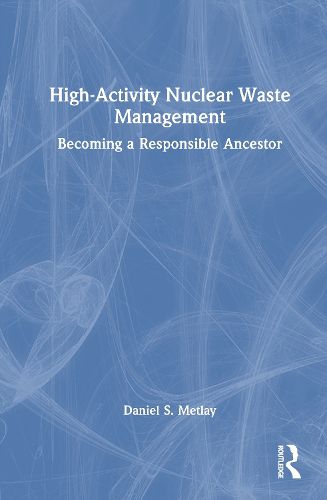Readings Newsletter
Become a Readings Member to make your shopping experience even easier.
Sign in or sign up for free!
You’re not far away from qualifying for FREE standard shipping within Australia
You’ve qualified for FREE standard shipping within Australia
The cart is loading…






High-Activity Nuclear Waste Management Policy: Becoming a Responsible Ancestor describes the technical, social, and political challenges of developing a deep-mined, geologic repository for high-activity nuclear waste. It emphasizes how the technical estimates of repository performance affect non-technical considerations, such as trust and risk perceptions, and how those considerations in turn affect the technical determinations.
Unlike other democracies with mature nuclear power programs, the United States lacks a permanent management plan for its high-activity radioactive waste. This book analyzes how the US reached this negligent position and examines how eight other countries have addressed five critical waste management activities: establishing management organizations, selecting a repository site, implementing phased repository development, licensing a repository, and addressing technical controversies. It concludes with recommendations for reconstituting an effective waste management program in the United States.
The book will interest nuclear waste and nuclear energy and safety researchers, policy makers, and administrators. It will also benefit graduate students taking specialized courses in nuclear waste management, technology ethics, and public/energy policy.
$9.00 standard shipping within Australia
FREE standard shipping within Australia for orders over $100.00
Express & International shipping calculated at checkout
High-Activity Nuclear Waste Management Policy: Becoming a Responsible Ancestor describes the technical, social, and political challenges of developing a deep-mined, geologic repository for high-activity nuclear waste. It emphasizes how the technical estimates of repository performance affect non-technical considerations, such as trust and risk perceptions, and how those considerations in turn affect the technical determinations.
Unlike other democracies with mature nuclear power programs, the United States lacks a permanent management plan for its high-activity radioactive waste. This book analyzes how the US reached this negligent position and examines how eight other countries have addressed five critical waste management activities: establishing management organizations, selecting a repository site, implementing phased repository development, licensing a repository, and addressing technical controversies. It concludes with recommendations for reconstituting an effective waste management program in the United States.
The book will interest nuclear waste and nuclear energy and safety researchers, policy makers, and administrators. It will also benefit graduate students taking specialized courses in nuclear waste management, technology ethics, and public/energy policy.